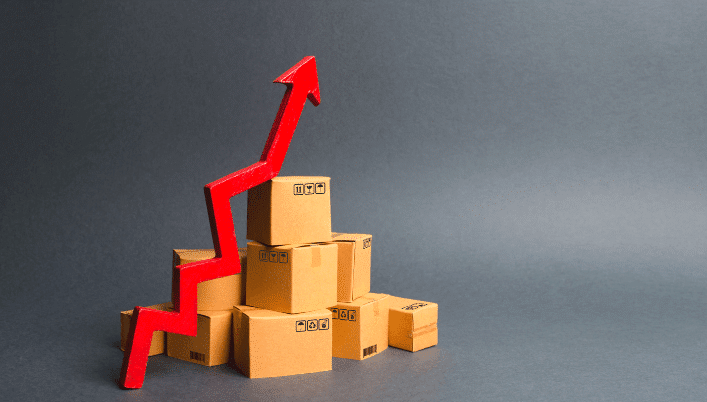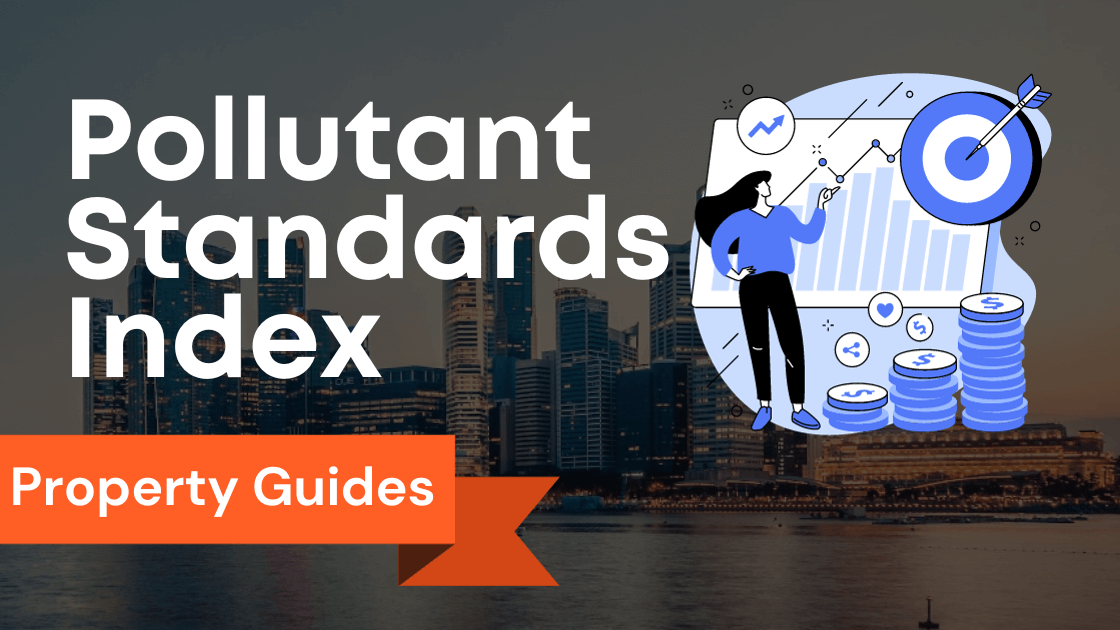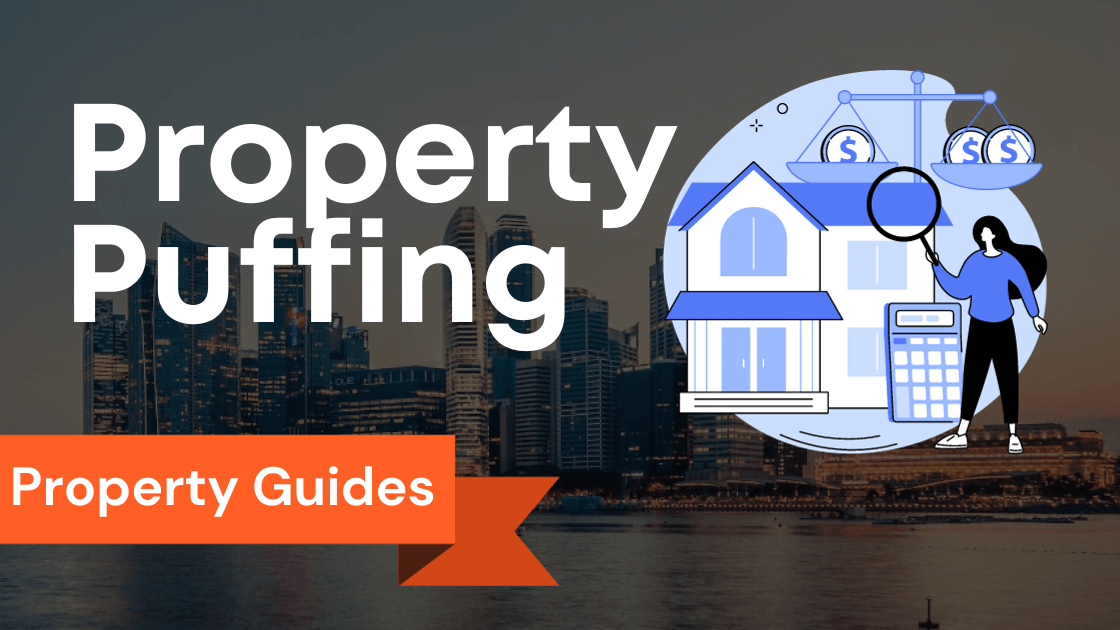What is PSF (Per Square Foot)?

PSF definition
PSF, short for Per Square Foot, is a measurement commonly used in Singapore to determine the price or value of a property.
It represents the cost or value of each square foot within a given property.
PSF is often used as a metric to compare the prices of different properties, both residential and commercial.
By calculating the PSF, individuals can understand the relative value of properties and make informed decisions when buying, selling, or renting real estate.
How to calculate PSF
To calculate the PSF, you need to divide the total price or value of the property by its total square footage.
For example, if a property is priced at $1,000,000 and has a total square footage of 2,000 square feet, the PSF would be $500.
This figure allows potential buyers or investors to compare properties based on their price per square foot.
PSF in Singapore
PSF is particularly relevant in the Singaporean real estate market, where it is commonly used to compare commercial properties, residential estates, and even rental leases.
Understanding the PSF of different properties in various locations can help individuals make informed decisions about where to invest or which property to purchase.
For example, if two similar apartments are located in different areas of Singapore, comparing their PSF can provide insights into the relative cost and value of each property.
Additionally, businesses considering leasing commercial spaces can evaluate different locations by comparing the PSF and assessing which location offers the most cost-effective option.
http://www.youtube.com/watch?v=MrHffJhtkrA
In summary, PSF (Per Square Foot) is a useful metric in Singapore that allows individuals to compare property prices and values.
By understanding the PSF of different properties, individuals can make informed decisions when buying, selling, or renting real estate in Singapore.
Key Takeaways
- PSF Definition: PSF, or “Per Square Foot,” is a commonly used measurement in Singapore to determine property prices and values.
- Calculating PSF: To calculate PSF, divide the total property price by its total square footage.
- Relevance in Singapore: PSF is widely utilized in Singapore for comparing property prices, including residential and commercial properties.
- Location Comparison: PSF helps individuals assess the cost and value of properties in different areas of Singapore.
- Online Calculators: Online PSF calculators provide a convenient way to determine PSF.
- PSF in Retail: In retail, PSF measures how efficiently a store utilizes its physical space for revenue generation.
- Optimizing Store Layout: Retailers can increase PSF by optimizing store layouts and product displays.
- Online and Offline Integration: Combining e-commerce with physical stores can enhance PSF by driving more traffic.
- PSF in Real Estate: PSF is applicable to all types of real estate in Singapore, aiding in comparisons and investment decisions.
- Monitoring PSF Trends: Tracking PSF trends helps investors identify potential opportunities and market developments.
Calculating PSF Price (2023)

If you are interested in the real estate market in Singapore, you may have come across the term PSF, which stands for “Per Square Foot.” PSF is a commonly used metric to calculate the price per square foot of a property.
In this article, we will explore how to calculate the PSF price, provide examples of PSF prices in Singapore, and discuss the use of a PSF price calculator.
How to calculate the price per square foot
Calculating the price per square foot involves dividing the total price of a property by its total square footage.
To calculate the PSF price, you can follow these steps:
- Determine the total price of the property: Begin by obtaining the total price of the property you are interested in. This could be the listing price or the final selling price.
- Measure the total square footage: Measure the total square footage of the property, including all rooms, living spaces, and common areas. Ensure that you use consistent units of measurement, such as square meters or square feet.
- Divide the total price by the total square footage: Divide the total price of the property by the total square footage. This will give you the price per square foot.
For example, if a property is priced at $500,000 and has a total square footage of 1,000 square feet, the PSF price would be $500.
PSF price examples
To give you an idea of PSF prices in Singapore, here are some examples:
- HDB flats: The average price per square foot for HDB flats in Singapore ranges from $600 to $900, depending on factors such as location, size, and condition.
- Private condominiums: Private condominiums in prime locations can have PSF prices ranging from $1,500 to $3,000 or more. Luxury developments and sought-after neighborhoods may command even higher PSF prices.
- Landed properties: Landed properties, including terraced houses, semi-detached houses, and bungalows, generally have higher PSF prices, starting from around $1,500 and going up to several thousand dollars per square foot.
Please note that these are just general examples, and PSF prices can vary significantly depending on various factors, such as property type, location, market conditions, and amenities.
PSF price calculator
If you prefer a more convenient way to calculate the PSF price, you can use an online PSF price calculator.
These calculators allow you to input the property price and square footage, and they will automatically calculate the PSF price for you.
This can be helpful for quick estimations or comparisons between different properties.
http://www.youtube.com/watch?v=XssghUXZluY
In conclusion, understanding how to calculate the PSF price is essential when considering real estate in Singapore.
By using the PSF metric, you can gain insights into the pricing and value of properties in different locations.
Remember to consider various factors that can influence PSF prices, and use online calculators for quick and convenient calculations.
Increasing Sales Per Square Foot

As a retail or small business owner, you are constantly looking for ways to maximize your profits.
One important metric to consider is sales per square foot (PSF).
PSF is a key performance indicator that measures how efficiently you are utilizing your retail or business space to generate revenue.
Increasing sales per square foot can lead to higher profitability, better return on investment for real estate, and improved overall business performance.
In this article, we will explore tips and strategies for increasing sales per square foot and provide case studies of businesses that have achieved success in this area.
Tips for Increasing Retail Sales Per Square Foot
If you operate a retail business, implementing the following strategies can help boost your sales per square foot:
- Optimize Store Layout: Ensure that your store layout is designed to maximize customer flow and increase product exposure. Use visual merchandising techniques to highlight products and create an engaging shopping experience.
- Improve Product Assortment: Regularly analyze sales data to identify top-selling products and optimize your product mix. Focus on offering high-margin items and introducing new products that align with customer demands.
- Enhance Store Atmosphere: Create a pleasant and inviting ambiance in your store. Pay attention to factors like lighting, music, cleanliness, and customer service to provide a positive shopping experience that encourages customers to stay longer and make purchases.
Strategies for Increasing Small Business Sales Per Square Foot
If you are a small business owner operating in a non-retail industry, there are still strategies you can employ to increase your sales per square foot:
- Create Upselling Opportunities: Train your employees to identify upselling opportunities and encourage them to suggest additional products or services to customers. This can help increase the average transaction value and boost sales per square foot.
- Optimize Space Utilization: Analyze your business space and identify any unused or underutilized areas. Explore creative ways to use these spaces more effectively, such as offering additional services, setting up pop-up shops, or renting out space to complementary businesses.
- Implement Customer Loyalty Programs: Encourage repeat business by implementing customer loyalty programs that reward customers for their continued support. Offering exclusive discounts, personalized experiences, or special perks can help increase sales per square foot by fostering customer loyalty.
Case Studies of Businesses That Have Increased Sales Per Square Foot
Several businesses have successfully increased their sales per square foot.
One notable example is Apple, which has achieved impressive sales per square foot in its retail stores by creating a unique and immersive shopping experience.
Another example is Starbucks, which has capitalized on the popularity of its coffee shops and increased sales per square foot by introducing food options and expanding its product offerings.
In conclusion, increasing sales per square foot is a crucial goal for any business looking to optimize its profits and improve overall performance.
By implementing the tips and strategies outlined above and drawing inspiration from successful case studies, you can enhance the efficiency and profitability of your retail or small business.
PSF in Retail

In the world of retail, measuring success extends beyond sales figures and profits.
One important metric that is often used to evaluate success in brick-and-mortar retailing is PSF, which stands for Retail Sales Per Square Foot.
PSF is an indicator of how efficiently a retail store is utilizing its physical space to generate revenue.
In this article, we will delve into the concept of PSF in the context of retail spaces and shopping malls, and discuss how businesses can increase their sales per square foot.
PSF for Retail Spaces
For retailers, one of the key considerations in evaluating the potential profitability of a physical location is the retail sales per square foot.
This metric helps them understand how much revenue they can generate within a given space.
Retailers like Tiffany, for example, have a high PSF due to their high-value products.
Understanding the PSF can be especially useful when comparing potential locations and negotiating commercial leases.
By evaluating the PSF figures and considering the lease structure, retailers can make informed decisions that align with their business goals.
PSF for Shopping Malls
In the case of shopping malls, PSF becomes a crucial metric for both the retail companies and the mall owners.
For retail companies, a higher PSF indicates better sales performance and profitability.
On the other hand, mall owners rely on PSF to determine rental rates and assess the profitability of their leasing operations.
They need to balance the maintenance costs of the mall with the expected revenue from the retail stores.
Understanding the PSF in a shopping mall can help both parties make informed decisions about leasing and rental rates in a multi-tenant building.
How to Increase Sales Per Square Foot
Increasing sales per square foot is a goal shared by retailers of all sizes, from small businesses to major players like Walmart.
Here are some strategies to boost PSF:
- Enhance Store Layout: Optimize the layout of your store to create a seamless flow and maximize the use of space. Highlight popular products and create attractive displays to entice customers to explore further.
- Improve Product Placement: Strategic product placement can encourage upselling and cross-selling. Position complementary items near each other to encourage customers to make additional purchases.
- Offer In-store Experiences: Create unique experiences that cannot be replicated online. Interactive displays, demonstrations, and personalized customer service can attract customers and increase the time they spend in your store.
- Optimize Staffing Levels: Adequate staffing levels ensure that customers receive prompt assistance and have a positive shopping experience. Well-trained staff can provide personalized recommendations and help close sales.
- Integrate Online and Offline: Combining the advantages of both e-commerce and brick-and-mortar retailing can provide a seamless shopping experience. Offering online ordering, in-store pickup, and digital loyalty programs can drive traffic to your physical store and boost PSF.
By implementing these strategies and keeping a pulse on industry trends and consumer preferences, businesses can strive for higher sales per square foot and ensure success in the brick-and-mortar retailing landscape.
PSF in Real Estate

When it comes to the real estate industry in Singapore, there are various factors to consider, and one important metric used is the cost per square foot (PSF).
PSF is a measurement that helps property owners, investors, and potential buyers compare the value of different properties and make informed decisions.
In this article, we will explore the significance of PSF in the real estate industry, the trends in Singapore, and how to utilize PSF to compare properties effectively.
PSF for Different Types of Real Estate in Singapore
PSF (Per Square Foot) applies to all types of real estate in Singapore, including residential, commercial, and industrial properties.
By calculating the PSF, property owners and investors can assess the affordability, rental yield, and potential returns on investment.
PSF is particularly useful when comparing properties within the same category, such as residential apartments or commercial offices.
It enables buyers to evaluate the value for money, considering factors such as location, amenities, and property condition.
PSF Trends in Singapore
PSF trends in Singapore can provide valuable insights into the real estate market.
Monitoring PSF trends allows investors and individuals to identify potential investment opportunities or areas with high growth potential.
Retail companies, for example, can use PSF data to analyze rental costs for different locations and make informed decisions about store locations.
PSF trends also reflect the development costs in various areas, which can influence the pricing of properties.
How to Use PSF to Compare Properties in Singapore
To effectively use PSF to compare properties in Singapore, it is important to consider several key factors.
Firstly, it is essential to compare properties within similar categories, such as comparing PSF for residential condominiums with similar sizes and locations.
Secondly, it is crucial to consider additional costs and factors that may affect the overall value, such as maintenance fees, lease terms, and potential renovation costs.
Finally, it is recommended to consult professionals, such as property appraisers or real estate agents, who can provide valuable insights and guidance based on their expertise and market knowledge.
In conclusion, PSF is a vital metric used in the Singapore real estate industry to compare different properties, assess affordability, and make informed investment decisions.
By understanding the PSF for various types of real estate, monitoring PSF trends, and considering key factors when comparing properties, individuals and investors can navigate the real estate market more effectively and maximize their returns on investment.
PSF – Per Square Foot Singapore Conclusion
The concept of PSF (Per Square Foot) in Singapore is an important metric in various industries, particularly in real estate and retail.
It refers to the calculation of price based on the square footage of a property or the sales per square footage in retail.
PSF serves as a critical measure of success in the brick-and-mortar retail industry, as it provides insights into the efficiency and profitability of physical stores.
By dividing the total sales by the total square footage, businesses can gauge the revenue earned per unit of space.
This metric allows retailers to evaluate the performance of their stores and make informed decisions about improvements and future investments.
In the retail industry, where physical stores and online sales coexist within an omnichannel environment, PSF becomes even more relevant.
It helps businesses compare the performance of their physical stores with their online sales and identify areas for improvement.
Additionally, PSF is a reliable indicator of the efficiency of store management and the effectiveness of up-selling techniques.
However, it is important to note that PSF is just one metric among many others that should be considered when evaluating the performance of a business.
Factors such as location, customer demographics, product assortment, marketing strategies, and customer experience all play crucial roles in determining overall success.
Looking ahead to 2025 and beyond, PSF is expected to remain a valuable metric in the retail and real estate investment industries.
As businesses continue to evolve and adopt a hybrid approach to retail, combining physical stores with online sales, PSF will provide insights into the profitability and efficiency of these new models.
In conclusion, PSF is an important metric that aids in the appraisal and improvement of store performance in the retail industry.
By calculating the revenue earned per square foot of floor space, businesses can gauge their efficiency and make informed decisions for future growth.
However, it should be used in conjunction with other performance indicators to get a comprehensive understanding of the business’s overall success.
Frequently Asked Questions
What is the concept of price per square foot?
It helps in comparing and evaluating the value of different properties.
How can I calculate the price per square foot?
For example, if a property costs $500,000 and has an area of 2,000 square feet, the price per square foot would be $250.
Why is it important to consider the price per square foot when buying a property?
It helps you understand if you are paying a fair price for the size and location of the property.
How can the price per square foot be used as an indicator in the real estate market?
By tracking changes in the price per square foot over time, you can identify trends and make informed decisions about buying or selling property.
What is the average price per square foot in Singapore?
It is advisable to consult real estate agents or online platforms that provide up-to-date information on property prices in different areas of Singapore.
How can I compare the price per square foot of different properties?
By dividing the total price by the total square footage, you can easily compare the price per square foot.
How can I calculate the square footage of my house?
Then, add up the square footage of all the rooms to get the total square footage of your house.
What is the importance of retail sales per square foot?
It indicates how much revenue is generated per unit of floor space and can be used to evaluate the performance of a store.
What are some factors that can affect sales per square foot?
By analyzing these factors, businesses can identify areas of improvement and optimize their sales-per-square-foot metrics.
How can I calculate the sales per square foot of a retail store?
This calculation provides a measure of how efficient the store is in generating revenue based on its physical size.












